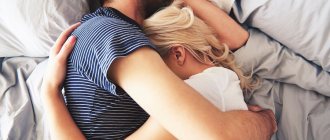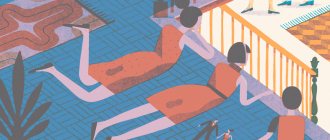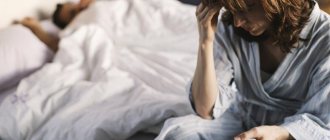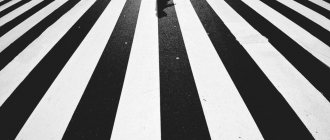Why does autumn blues occur and can it be avoided?
Autumn is the period of sunset.
A time when there is less light and heat, the length of the day is shortened, and wildlife is preparing for seasonal changes. This is a natural process of transition from one state to another and vice versa. And the name of this process is biorhythms. Man, being part of all life on Earth, is subject to natural biorhythms, solar and lunar phases, magnetic fields and changes in temperature and seasons. A striking example of a person’s dependence on biorhythms is flights with sudden changes in time zones and climate, when from frozen December we fly to hot Thailand.
But don’t rush to diagnose yourself with depression. This is a serious mental illness, it has nothing to do with the time of year, but the blues do happen in the fall. Reduced activity and stress during the autumn-winter period are common to everyone. And therefore, slight fatigue and even a slightly worse mood should be perceived as something normal, but not plunge into this state headlong. Most often, it affects weather-dependent and anxious people, as well as those who have surges in blood pressure and headaches or disturbed sleep. As the body undergoes restructuring, all these symptoms intensify. Chronic diseases are also getting worse, which means your health is getting worse.
To help yourself as soon as possible, just pull yourself together and follow a few psychological recommendations. And sometimes it’s worth going to the pharmacy, because autumn apathy may hide a lack of vitamins. Who is exposed to autumn changes? Sadness on gray days happens mainly to those who are not satisfied with their life. Dampness and dankness provide an additional reason for irritation and nervousness, giving rise to sad thoughts or concerns about the future.
PsyAndNeuro.ru
The purpose of this systematic review and meta-analysis was to examine the effects of caffeine on anxiety and panic attacks in patients with panic disorder and healthy controls. The following issues were considered:
- What is the effect of caffeine on subjective anxiety in adult patients with panic disorder and in healthy adults? Do these effects differ between sick and healthy people and is the effect dose dependent?
- What is the effect of caffeine on the occurrence of panic attacks in adults with panic disorder and in healthy adults, do these effects differ, and is the effect dose dependent?
Randomized placebo-controlled trials and controlled clinical trials in patients with panic disorder were selected for review. Studies with or without a psychiatrically healthy control group were included. All participants are 18 years of age or older.
The experimental intervention in the selected studies was placebo-controlled oral caffeine (tablet or drink). In studies in which the drink was used, the tastes of the drinks in the experimental and control groups were the same or as close as possible, for example, caffeine was added to decaffeinated coffee. Only studies with blinding were selected, but double blinding was not a mandatory selection criterion. The study outcomes included reports of anxiety and/or panic attacks after the experimental intervention. Only original articles written in English were selected, without restrictions on publication date.
After excluding studies that did not meet the selection criteria, 10 studies remained. A total of 244 patients with panic disorder took part in them.
Caffeine and placebo were administered orally in capsules (2 studies), instant coffee (5 studies), or other liquids (3 studies). Seven studies used a fixed dose of 480 mg caffeine, one study used a fixed dose of 400 mg, and two studies used a fixed dose of caffeine based on body weight, 10 mg/kg and 7 mg/kg, representing 750 mg and 525 mg caffeine, respectively, in a participant with body weight 75 kg.
Anxiety levels following caffeine intake were recorded in 6 studies, including 121 patients with panic disorder and 111 healthy controls. Caffeine increased anxiety levels in patients (Hedges' g = 1.94 [95% CI: 1.19–2.69]) and in healthy controls (Hedges' g = 0.91 [95% CI: 0.46–1.36] ) with an overall larger increase in the number of patients (Hedges' g = 1.02 [95% CI: 0.09–1.96]).
The results of the meta-analysis are consistent with the findings of studies that examined anxiety after caffeine ingestion but were excluded from the formal meta-analysis because they did not report data eligible for meta-analysis or did not include healthy subjects for comparison.
Only three studies provided data on changes in anxiety levels for both caffeine and placebo, precluding a proper meta-analysis of the effects of caffeine compared with placebo. However, all five studies that reported statistical comparisons of caffeine with placebo reported greater increases in anxiety with caffeine compared with placebo, and all four studies in healthy subjects reported larger effects in patients with caffeine. panic disorder, compared with the effect produced in healthy people.
Panic attacks after taking caffeine or placebo were reported in nine studies involving 237 patients with panic disorder, and six studies involving 115 healthy controls. A meta-analysis of six studies involving patients (n = 128) and healthy controls (n = 115) found an increased risk of panic attack after caffeine ingestion in patients compared with healthy controls (log RR: 3.47; 95% CI 2.06-4.87 ), Q(5) = 8.45 p = 0.133. A total of 69 patients (53.9%) and 2 healthy controls (1.7%) experienced a panic attack after taking caffeine. In three studies that did not include healthy subjects and were therefore not included in the meta-analytic effect size analysis, 52 of 109 patients (47.7%) had a panic attack. Overall, across nine studies, 121 (51.1%) patients and 2 (1.7%) healthy controls experienced a panic attack after taking caffeine. None of the studies reported panic attacks after taking a placebo.
Due to the variability of caffeine doses used in the included studies, a dose-response relationship could not be calculated.
The present systematic review and meta-analysis shows that caffeine, approximately equivalent to 5 cups of coffee, causes anxiety in both patients with panic disorder and healthy individuals, with affected individuals being more vulnerable and at higher risk of a panic attack. Insufficient numbers of studies using caffeine doses other than 480 mg precluded analysis of dose-response effects.
The results suggest that caffeine has a strong effect on subjective anxiety in patients with panic disorder, as well as in healthy controls.
It should be noted that there was quite a large heterogeneity of effect sizes across the included studies. Separate studies have reported both higher levels of anxiety in the group with panic disorder and equal levels in the group of patients and the group of healthy people. The calculated effect size may not be as representative of the population as in the case of the panicogenic effects of caffeine, where all studies pointed in the same direction of an increased risk of panic attacks in patients. However, studies finding higher levels of anxiety in disease groups were not found to differ in any way from studies reporting equal levels of anxiety. One proposed factor may be differences in the distribution of adenosine receptor genotypes across studies, for example, ADORA2A polymorphisms have been shown to influence sensitivity to caffeine-induced anxiety in healthy individuals. However, this can only be speculative because ADORA2A polymorphisms were not examined in any of the included studies and, to our knowledge, have not been examined in any studies of the effects of caffeine on patients with panic disorder.
Genetically determined susceptibility to the anxiogenic and panicogenic effects of caffeine is suggested by a study that showed similar susceptibility in patients and their first-degree relatives, and also showed that while a healthy person experienced a panic attack after consuming caffeine, a first-degree relative suffering from a panic attack disorder, I also had a panic attack after taking it [1].
Many questions remain unanswered. One of the main questions is whether there is a relationship between caffeine dose and anxiety/panic attacks. This is important when discussing clinical implications of the findings because the large doses of caffeine (5 cups of coffee) used in the studies do not correspond to the normal dose of caffeine consumed in everyday life (about 100 mg in a cup of coffee). In healthy people, moderate doses of caffeine (100-300 mg) have positive effects on mood, concentration and learning, while higher doses (>400 mg) may cause anxiety.
Of course, patients with panic disorder are more sensitive to the anxiogenic and panicogenic effects of caffeine compared to healthy individuals, but it is still unknown how they respond to low to moderate doses. Variants of the adenosine receptor 2A (ADORA2A) gene are associated with both an increased risk of developing panic disorder and a stronger anxiogenic effect of regular caffeine doses (100-150 mg) [2,3], although this may only affect individuals with low habitual consumption caffeine
Healthy people may develop tolerance to the anxiogenic effects of caffeine by consuming caffeine, but it is unclear whether this also applies to patients with panic disorder. In the studies included in this review, there was no clear difference in habitual caffeine consumption between diseased and healthy participants, suggesting that patients do not develop tolerance to the anxiogenic effects of caffeine.
On the other hand, there are cases where patients with excessive anxiety showed improvement when abstaining from caffeine [4]. Based on these data, guideline authors advise patients with panic disorder to abstain from caffeine, but it would be better to tailor recommendations rather than focusing on a group of patients with heterogeneous etiologies and responses to caffeine. It is best to evaluate the effects of caffeine on a specific patient as part of standard treatment.
There are beneficial effects of caffeine consumption, and not all patients with panic disorder or other anxiety disorders need to avoid caffeine due to anxiogenic effects, but physicians and patients should be aware of such effects. Additionally, doctors should be aware that if a person experiences a panic attack after consuming caffeine, it may be a sign of panic disorder, since healthy people rarely experience panic attacks caused by caffeine, at least in doses up to 750 mg.
Interestingly, in the studies reviewed, about half of the patients with panic disorder experienced a panic attack after taking caffeine. This may indicate that these patients develop panic attacks and full-blown panic disorder differently than those who do not have a panic attack after taking caffeine. Accumulating evidence points to homeostatic and respiratory patterns in patients who respond with a panic attack to caffeine. This is consistent with the increasingly accepted idea of heterogeneity in both the etiology and symptomatology of panic disorder, as well as other anxiety and psychiatric disorders.
The anxiogenic and panicogenic mechanisms of caffeine are still largely unknown. Caffeine is known to non-selectively block adenosine receptors, of which the most interesting are the inhibitory A1 receptors and mainly the excitatory A2A receptors. Of interest in this context is the involvement of these receptors in chemosensation, respiratory regulation, heart rate regulation, as well as threat detection and emotional processing.
With regard to chemosensation, adenosine receptors may mediate caffeine-induced panic, either by increasing respiratory activity in chemosensory brain regions such as the brainstem, or through other direct or indirect changes in homeostasis. For example, caffeine typically causes vasoconstriction through binding to the A2A receptor in the endothelium, and it has been suggested that some people may be particularly sensitive to this effect [5].
Research points to common mechanisms underlying caffeine-induced panic and airway vulnerability. The respiratory subtype of panic disorder, which is characterized by symptoms such as shortness of breath, a feeling of suffocation, and hyperventilation, is associated with increased sensitivity to caffeine [6]. Moreover, patients who experience a panic attack after taking caffeine also react to the 35% CO2 test [5]. This suggests that caffeine induces panic in the same way as CO2.
Adenosine A1 and A2A receptors are also involved in the regulation of myocardial oxygen function and coronary blood flow. Antagonism of these receptors leads to an increase in heart rate, which is another common symptom of panic attacks. However, heart rates did not differ between panic disorder patients and controls in caffeine studies, suggesting that caffeine acts through other mechanisms to trigger anxiety and panic attacks.
Psychological explanations may improve understanding of the panicogenic and anxiogenic effects of caffeine. People prone to panic interpret bodily symptoms, such as a racing heart, as signals of an impending disaster (such as an incipient heart attack). Therefore, an increase in heart rate due to peripheral adenosine receptor antagonism may contribute to the onset of panic attacks in susceptible individuals. In other words, the positive arousal effects caused by small doses of caffeine (up to 300 mg) can increase anxiety and cause panic attacks, especially at higher doses in sensitive people. Behavioral manifestations of caffeine's effects in patients may also be learned responses. The sensations initially caused by caffeine are associated with anxiety and panic through interoceptive conditioning.
From this perspective, panic disorder may be considered unique among anxiety disorders in that the stimuli that induce anxiety and fear are interoceptive. Thus, psychological treatments for panic disorder may focus on treating the anxiety disorder to reduce anxiety, and treating the physical condition to reduce anxiety about the medical condition, rather than reducing the actual physical symptoms.
Peripheral receptor antagonism that produces bodily sensations may be due to blocking of receptors in the brain, such as the amygdala and other brain regions such as the periaqueductal gray matter, where receptor antagonism may lower the threshold for detecting threat, making predisposed individuals even more prone to catastrophic interpretation of normal bodily symptoms.
The only study to date examining the effects of caffeine on emotional processing in the brain using functional magnetic resonance imaging found increased threat-related activity in the periaqueductal gray matter [7], a brain region associated with panic attacks and panic disorder. It should also be noted that panic attacks sometimes occur without any sense of fear, suggesting that there is a need for more research that separates changes in the homeostatic mechanisms that cause bodily symptoms from psychological factors such as catastrophic misinterpretation and sensitivity to anxiety when panic attacks occur.
Author of the translation: Filippov D.S.
Source: Klevebrant L, Frick A. Effects of caffeine on anxiety and panic attacks in patients with panic disorder: A systematic review and meta-analysis. Gen Hosp Psychiatry. 2022 Dec 2;74:22-31
[1] A. E. Nardi, A. M. Valença, I. Nascimento, R. C. Freire, A. B. Veras, V. L. de -Melo-Neto, et al. A caffeine challenge test in panic disorder patients, their healthy first-degree relatives, and healthy controls. Depress Anxiety, 25 (10) (2008), pp. 847-853
[2] K. Alsene, J. Deckert, P. Sand, H. de Wit Association between A2a receptor gene polymorphisms and caffeine-induced anxiety Neuropsychopharmacology, 28 (9) (2003), pp. 1694-1702
[3] Childs, E., Hohoff, C., Deckert, J., Xu, K., Badner, J., & Wit, H. de. (2008). Association between ADORA2A and DRD2 polymorphisms and caffeine-induced anxiety. Neuropsychopharmacology, 33(12), 2791–2800
[4] MS Bruce, M. Lader Caffeine abstention in the management of anxiety disorders Psychol Med, 19 (1) (1989), pp. 211-214
[5] Nardi, AM Valença, FL Lopes, VL de -Melo-Neto, RC Freire, AB Veras, et al. Caffeine and 35% carbon dioxide challenge tests in panic disorder Human Psychopharmacol: Clin Experimental, 22 (4) (2007), pp. 231-240
[6] M. M. Zugliani, R. C. Freire, G. Perna, J. A. Crippa, A. E. Nardi Laboratory, clinical and therapeutic features of respiratory panic disorder subtype CNS & Neurological Disorders Drug Targets, 14 (5) (2015), pp. 627-635
[7] J. E. Smith, A. D. Lawrence, A. Diukova, R. G. Wise, P. J. Rogers Storm in a coffee cup: caffeine modifies brain activation to social signals of threat Soc Cogn Affect Neurosci, 7 (7) (2012), pp. 831-840
Adaptogens in autumn
During the off-season, the body produces more cortisol, the stress hormone. Adaptogens neutralize the effect of cortisol at the cellular level and restore normal functioning of the body. They activate metabolic processes, improve the supply of oxygen to tissues, stimulate the heart, tone the walls of blood vessels. Based on the name of the group of drugs, they are needed to help the body adapt to the change of season, support the immune system and protective functions of the body, give energy and strength in period of perestroika. Adaptogens help to reveal the internal reserves of the body and adapt to the external situation.
Popular stress relievers
Ginseng root
A well-known adaptogen, presented both in the form of dry root and in the form of tinctures, tablets and capsules. We are accustomed to trusting the thousand-year history of Asia, looking at its “ageless” inhabitants and wisest historical figures. Ginseng was first discovered in Korea more than 2000 years ago! A decent amount of time to prove its effectiveness. In the east they are still convinced that ginseng can make a person stronger, more resilient, and gives longevity and eternal youth of spirit.
Increasing immunity and body resistance are one of the main results of taking ginseng. That is why it is so popular in the off-season, when both immunity and mood need stimulation. The valuable root is also used in the treatment of vascular diseases, atherosclerosis and heart pathologies, anemia, hypotension, and diabetes. Ginseng is also an excellent remedy for helping with neuropsychic diseases, neuroses, neurasthenia, as well as protracted illnesses that deplete all strength. The root of life is what this healing plant is called. It is especially indicated for people after 40, when physiological processes begin to slow down. It helps to preserve and increase strength, maintain a clear mind.
Eleutherococcus
Siberian ginseng is what people call Eleutherococcus. The main value of Eleutherococcus is eleutherosides B, D, E. They are found in large volumes in the shoots of the plant. Increasing tone, energy replenishment and “switching on” the body are the main reasons to take a course of eleutherococcus. It becomes a good catalyst for many physiological functions in the body - metabolism, the production of energy fuel for humans, improves physical endurance and mental performance. It relieves spasm and tension, accelerates breathing, blood flow and the synthesis of immune bodies.
By stimulating recovery processes, Eleutherococcus restores strength to a tired, worn-out body, improves immunity and restores youth.
Indicated for exhaustion, overfatigue, asthenic syndromes and during periods when physical activity increases (among athletes), during sessions and exams, and high mental stress. Stress, nervous breakdowns, neuroses, VSD are also reasons to start taking Eleutherococcus. The plant perfectly helps during the period of rehabilitation after long-term illnesses, chemotherapy, and immunodeficiencies. Indicated in periods after severe and long-term illnesses; as rehabilitation after radio- and chemotherapy; for immunodeficiencies. Indicated for obesity.
Rhodiola Rosea
Even astronauts use Rhodiola! The active phytochemical salisdroside makes Rhodiola highly effective in relieving anxiety and combating the signs of premature aging. It restores sleep after stressful events, protects the liver from toxins and improves memory.
The plant began to be actively studied from the point of view of official science in the last century. The first expedition under the leadership of Professor Krylov took place in the 60s in Altai. Then Rhodiola was discovered in the Altai Taiga and, based on the results of research, it was introduced into official medicine as a medicinal plant. The undeniable and scientifically proven properties of Rhodiola rosea are adaptogenic, restorative, stimulating.
Separate studies were conducted in the field of the plant’s influence on the human central nervous system. Thus, preparations based on Rhodiola change the bioelectrical activity of the brain and improve memory and the processes of remembering information. This is achieved by increasing resistance to stress.
There have also been cases where Rhodiola had a positive effect in eliminating the side effects of psychotropic drugs for schizophrenia. Physical endurance and mobilization of strength and energy is another proof of the benefits of the plant, identified during experiments. Thus, a test on white rats confirmed and recorded the amount of lactic acid in the muscles, the preservation of high levels of phospholipids in the muscles and liver, as well as blood sugar after 2 hours of swimming in individuals receiving the plant preparation.
It is possible to talk about the hepatoprotective property of Rhodiola. Animal studies have proven the effectiveness of use as a therapeutic and prophylactic agent for liver damage.
Echinacea
One of the most famous, popular and effective adaptogens.
Echinacea differs in its principle of action on the body from many adaptogens. And if ginseng, lemongrass, and eleutherococcus stimulate the body, bring vigor and stimulate the immune system, then echinacea works somewhat differently. It forces the immune system to work independently, finding internal reserves and sources of strength. To speed up the treatment of ARVI and influenza, Echinacea is indispensable. But in addition to treatment, drugs based on it are an excellent means of prevention.
Echinacea may be a useful adjuvant in the treatment of cancer and chronic fatigue syndrome. It is effective in states of mental depression, physical and nervous exhaustion, and has a stimulating effect on the lymphatic system. Suitable for long-term use, non-addictive, does not depress the nervous system.
Depression and how to deal with it
- home
- For patients
- Articles
- Depression and how to deal with it
»
»
»
What is depression and how to deal with it.
Depression is a mental disorder that leads to a depressed state and can persist for a long time. It can be one-time, repeated after a certain period of time, or permanent. The last option is the most dangerous; it can lead to serious mental disorders.
According to doctors, by 2022 the number of people with this diagnosis will exceed the number of cancer and cardiovascular patients.
Depression is already the cause of 60% of suicides.
Not so long ago, the peak of depression was between the ages of 30 and 40; today it has become sharply “younger” and affects people under 25 years of age.
People of any age are susceptible to depression, including preschool children. There are slightly more patients among older people. The risk of developing depression among single and divorced people is 2–4 times higher than among married people. At the same time, divorced and single men are at greater risk than divorced and single women.
Women develop depression twice as often as men. However, representatives of the stronger sex are much less likely than women to seek help from specialists, preferring to suppress symptoms with alcohol or throw themselves into work.
Apathy and bad mood can occur in completely healthy people. Depressive states are accompanied by motor and mental retardation, anxiety, the cause of which cannot be determined, and insomnia. At the same time, it is difficult for a person to concentrate and make decisions. A bad mood usually goes away within a day or two, but depression can last for months.
True, a state of depression, if it is caused by grief, the loss of a loved one, can also last a long time. But everyday life with its worries and worries about daily bread gradually smooths out the pain of loss.
Causes of depression
The disease can develop under the influence of internal and external factors. Reactive depression occurs as a consequence of a person’s internal experiences caused by serious stress, for example, the death of a loved one, loss of material values, divorce, etc. In these circumstances, a person is oppressed by a feeling of loss and a feeling of complete helplessness. Sometimes depression is a companion to atherosclerosis and hypertension. This condition can also occur in severe inflammatory diseases such as gangrene, when the body is intoxicated with tissue decay products.
Endogenous depression develops with complete external well-being - it is caused by mental illnesses, mainly hereditary, which lead to metabolic disorders.
Internal causes of depression:
- hormonal imbalances, in particular, decreased production of neurotransmitters, primarily serotonin, disruptions in the synthesis of norepinephrine, dopamine;
- hormonal changes in the body during certain periods of life (after childbirth, menopause, puberty);
- systematic use of medications, one of the side effects of which is depression;
- diseases of the nervous and endocrine systems (neurasthenia, hypothyroidism);
- deficiency of vitamins and minerals, especially affecting the nervous system; lack of B vitamins;
- dehydration of the body;
- anemia;
- infectious diseases;
- chronic pathologies;
- lack of sunlight (seasonal depression);
- lack of sufficient oxygen supply;
- alcoholism;
- addiction;
- abuse of sedative and hypnotic drugs.
Symptoms of depression
. To be diagnosed with depression, the following symptoms must be present for at least two weeks:
- loss of interest in the environment and life guidelines;
- constantly low emotional background, pessimism, complete concentration of thoughts on negative events and sensations;
- loss of performance;
- weakness;
- insomnia;
- increased irritability;
- low self-esteem, attacks of self-flagellation;
- loss of appetite;
- weight loss or, conversely, uncontrolled weight gain;
- unmotivated fear and panic attacks;
- decreased cognitive function of the brain (inability to concentrate);
- lethargy;
- excessive fatigue and loss of strength.
Patients suffering from depression are often bothered by headaches, dizziness, discomfort in the heart and abdomen, joint pain, constipation alternating with diarrhea, menstrual irregularities in women, loss of sexual desire, etc. Depression imitates and “mimics” any somatic (bodily) diseases. It is for this reason that doctors have coined the term “masked depression” - for cases when it is “hidden” under the guise of a somatic disorder. If depression occurs, it is very important to treat it like an illness. For example, in hypertension, the mechanism that regulates blood pressure is disrupted, and in depression, the mechanism that regulates mood is disrupted. We do not hesitate to consult a doctor about hypertension, and we should not delay a visit to him for depression.
Depending on the results of the examination, the doctor may prescribe antidepressants - drugs that improve mood, or tranquilizers - drugs that neutralize the effects of adverse external factors on the psyche. In a state of depression, the reaction to any negative situation becomes extremely aggravated and the slightest offense can drive a person crazy. With the help of tranquilizers, you can reduce this susceptibility, creating a kind of protective field, similar to that created by a cast applied to a broken arm.
How to deal with depression
Social causes play an important role in the occurrence of the disease: troubles in the family, at work. If you find yourself in a difficult situation, analyze it and try to simplify it as much as possible.
If you are having troubles at work, tell yourself: “Are my work achievements that important to me? In the end, I was born not for labor feats, but in order to be happy and give happiness to my loved ones.” Don't take on too much. Sometimes the proverb is right: “Work is not a wolf, it won’t run into the forest.” Sometimes allow yourself to give up on everything and fall asleep - but in the morning you will wake up in a good mood and be able to move mountains. A family conflict has arisen, don’t dwell on it, remember what a great worker you are, how valued you are in your service.
If you are experiencing grief, don’t go completely into it, look around and see that someone needs even more sympathy than you. Take care of him and your soul will feel better.
To cope with depression, doctors advise:
- think about good things;
- learn to distinguish failure from disaster;
- rest more often;
- exercise;
- change the situation;
- Praise yourself for any success.
Any physical activity helps lift your mood, not just because you take your mind off your problems. Muscle tone increases, the brain releases natural substances - endorphins, which in their effect on the body are close to antidepressants and antipsychotics. In addition, exercise makes you feel better about yourself, which is very important for further combating depression.
In a healthy body healthy mind. Play sports. Even regular morning exercises can work wonders, a good and proven way to combat impending depression. Just choose a set of exercises so that all muscle groups participate in the work. Jogging, swimming, cycling, horseback riding, and even walking help. And if you have regularly maintained good shape before, now try to exercise until you are completely physically exhausted. This is also a good way to relieve mental stress. Alternate mental work and physical activity. In this sense, moderate, enjoyable work on a summer cottage is a panacea for city dwellers. The sky is blue, the air is fresh, green sprouts are sprouting from the ground, and the muscles ache pleasantly from working with a shovel for half an hour. You definitely need to work, have a range of permanent responsibilities, and be part of a team. After all, with depression, there is often a desire to give up everything and lock yourself within four walls. Under no circumstances should you give in to this, otherwise you may become afraid of leaving the house.
Get enough sleep. As a rule, depression is accompanied by insomnia. Sleep is the best healer. When going to bed, ventilate the bedroom well and, if possible, leave the window open. This will provide a sufficient supply of fresh air, which means you will sleep longer and wake up more alert. For insomnia, if we are talking about mild depression, you can use herbal infusions: valerian, peony, motherwort. Sometimes taking them is enough to normalize the condition and improve sleep. You can put a gauze bag stuffed with crushed valerian roots under your pillow or hang above your bed: their smell has a slight hypnotic effect. Find someone with whom you can have a heart-to-heart talk and share your experiences with him. I do not have anyone to talk to? Cry into your pillow. Tears also bring relief from depression. Live for today. Don’t engage in soul-searching, don’t accumulate grievances, don’t reopen wounds, leave the past in the past. Don't be afraid of the future - most of the disasters you can imagine will never happen. Change your surroundings. Get out into the forest, into the village, walk around the city without any haste, look into places where you have never been before. Depression will not disappear if you close yourself within four walls and mope.
Don't forget about the healing effects of art. For depression, classical music has a beneficial effect.
Diet for depression
Before starting therapy, it is necessary to adjust the diet, enriching it with vitamins, amino acids, and microelements. A number of foods have natural antidepressant properties.
First of all, these include foods rich in the essential amino acid tryptophan, which helps increase the production of serotonin in the brain. The highest concentration of tryptophan is present in mushrooms, oats, bananas, soybeans, nuts, seeds, dried dates, dairy and fermented milk products (cottage cheese, kefir, cheese, whole milk), dietary meat, chocolate, and freshly squeezed carrot juice.
Be sure to enrich your diet with foods containing B vitamins: bee pollen, bran, yeast, including brewer's yeast, whole grain bread, legumes, potatoes, tomatoes, broccoli, cauliflower, leafy greens, green vegetables, citrus fruits, eggs, liver and other offal, meat, fish, cheese, tofu, kefir, buckwheat, corn, spinach, seafood.
It is advisable to include foods rich in iron and vitamin C in the menu. Honey, especially buckwheat and sunflower honey, dried apricots, rose hips and sea buckthorn, a decoction of oat grains, prunes, raisins, and grapes should be eaten daily. We should not forget about foods rich in magnesium, on which the functioning of the heart and central nervous system directly depends. Supplement your diet with cauliflower, nuts, peas, lentils, peaches, avocados, cereals, coriander, basil, and sage.
An important point in the treatment of depression is maintaining a water regime (2 liters of water per day). Scientists have proven that dehydration causes excessive consumption of the amino acid tryptophan, which can reduce the production of “happiness hormones” in the brain.
How to fight depression on your own using folk remedies?
Valerian root . The infusion helps with increased excitability, convulsions, and insomnia. Crushed dry valerian root (2 tsp) is poured with a glass of boiling water, infused for 2 hours, filtered and taken three times a day, 15-20 ml.
Collection of herbs. Herbal tea helps you relax and optimize your mood. Mix hop cones, chamomile inflorescences, valerian root and whole dried lemon balm bushes in a ratio of 2:1:1:1 and grind the plants in a coffee grinder. Two tablespoons of the collection are brewed in a thermos with 0.4 liters of boiling water. The strained tea is consumed in small portions throughout the day, and a glass of infusion is drunk before bed.
Oats. An infusion of oat straw saturates the body with B vitamins and other nutrients for the nervous system. Pour three tablespoons of straw into 0.4 liters of boiling water, leave for 1.5 hours, filter. Take 50 ml 4 times a day.
St. John's wort. Traditional medicine doctors prescribe a decoction of St. John's wort as a proven antidepressant. A dessert spoon of dry raw materials is poured with a glass of hot water and simmered in a water bath for about 10 minutes. The strained broth is taken 3 times a day before meals, ½ cup.
Mint. A proven remedy for relieving attacks of irritability, normalizing sleep, and improving general condition. Boil a tablespoon of dry or fresh mint leaves over low heat for about 10 minutes and take ¾ cup in the morning after waking up and before bed. To enhance the healing properties of the drink, natural honey is added to it.
Soothing baths with a decoction of medicinal herbs. Mix the herbs of rosemary, wormwood and linden blossom in equal proportions. Pour 700 grams of the collection into 4 liters of cold water in an enamel pan, put on fire, bring to a boil, and boil for 5 minutes. The filtered broth is poured into a warm bath. The procedure is carried out before bedtime 2-3 times a week for a quarter of an hour. Such baths help you relax and relieve anxiety symptoms, and also promote a quality night's rest.
Sea salt. Baths with sea salt (3-4 times a week) have proven effective against depression. You can also use salt rubdowns in the morning (a tablespoon of sea or table salt per 1 liter of warm water).
Aromatherapy. A number of essential oils have mild antidepressant properties, in particular, orange, lavender, frankincense, rosemary, clary sage. It is advisable to wear an aroma medallion with the addition of 1 drop of one or a mixture of oils, aromatize rooms, especially before bed, baths (3-4 drops of any of the proposed oils or their combination per 20 grams of the base, which is used as bath foam, cream, honey, salt), enrichment of cosmetics (2 drops per 10 ml of base).
Daily long walks (at least an hour), especially in a forest area, park, or square, play an important role in the treatment of depression. Sports, dancing, yoga, Pilates increase the body’s ability to produce “happiness hormones”, so you should choose the most acceptable and harmonious type of physical activity for yourself.
Healing from depression is a long and difficult path, but combining the methods of conservative and traditional medicine will help you overcome it as quickly and painlessly as possible. Be healthy!
Materials used:
- AiF Health No. 48 dated November 25, 2010.
- https://narod-lekar.ru/kak-borotsya-s-depressiey/#ixzz4dkx5Hztv
How to get rid of stress and autumn depression. Recommendations from famous experts.
- To begin with, just accept the fact that everything in the world is cyclical and nothing lasts forever. After the bright summer and active movement there comes a lull, day gives way to night, joy turns to sadness. There is no such thing as endless positivity. A person changes in tune with nature, his skin changes, nails grow and are cut, blood cells are renewed, hormonal levels change, mood, goals, plans, desires change. Accept the fact that autumn outside the windows and in the soul is the norm. And since nothing lasts forever, the blues will not last forever.
- Prepare your sleigh in the summer. This means, mentally prepare yourself for autumn calm, reduced activity, dullness and rain. This does not mean that you need to succumb to pessimism and fall into depression in advance. This means you need to help your body with vitamins, adaptogens and...thoughts. Is summer over? It was cool! Now there is a blank slate ahead for plans and, in the end, wishes for Santa Claus. 4 months...should definitely be enough for you.
- Add bright colors to your diet and wardrobe. More light and warmth. A red scarf, orange shoes, a green bag, herbal tea with chocolate, an orange, a fluffy blanket and... a good movie are perfect. Maybe another cat. You have a feeling of velvety comfort running through your body right now? Nothing prevents this. Nothing and no one, just yourself. By the way, caring for someone and feeling responsible for this being perfectly helps to mobilize resources and drive away stress. So maybe a cat after all?
- Food, varied, tasty, loved. Autumn is not a time of restrictions. Food is a source of not only energy, vitamins and microelements, but also a good mood. Learn from the Danes the art of home coziness called hygge. Are you hungry? Eat. If you want to sleep, sleep. If you don’t want to cook, don’t cook, if you want to lie down, lie down. Without blaming yourself for inaction and without restrictions. Historically, the body switches on energy saving mode in the fall. The harvest and procurement period was ending, people were preparing to while away the winter with quiet family evenings. So excessive activity in search of a good mood can play a cruel joke.
- But it’s definitely worth moving. It could even be home workouts, a bicycle or exercise bike, jogging, yoga, or a swimming pool. It’s better to postpone heavy weights and slimming through “blood and sweat” until spring, when the swimming season is just around the corner. Hygge. Remember, right?
- Load up on vegetables, fish, nuts and eggs. Antidepressant products.
- Take care of yourself. In all senses. Protect yourself from negative emotions and don’t get drawn into them, read, watch, learn new things. Autumn is the time to finally find time for your favorite hobby. By the way, creativity is the best antidepressant. All over the world, art therapy has been bearing fruit for a long time. Moreover, it applies not only to brushes, paints, frescoes and embroidery. Cooking is also suitable. Treat yourself and your family. Try it, you will like it.
- Chat with friends, close relatives, children. But if you don’t want to, don’t communicate, wrap yourself in a blanket and allow yourself to relax with a good book or movie. However, remember that going out can also bring a lot of impressions and good emotions, and sometimes become a source of real inspiration, fateful events and new ideas. But this is what you need now, right?
- Clean your home. But don’t just do monotonous cleaning with rubber gloves, but do it while listening to your favorite music, for as long as you need. And give yourself the mindset at the beginning of the process that with every corner and shelf you clean, your mood is also cleansed.
- Finally, take a salt bath or bath. Salt, especially if it comes from the shores of the Dead Sea, as in our pharmacy, can work wonders. In general, more often bring beauty not only outside, but also inside. After all, working on yourself is the most important thing on this entire list. The work is difficult, but the highest paid.
Be healthy!
Treatment of depression. How to cope with the disease?
Depression (depressive syndrome) is one of the most typical psychopathological syndromes and can occur in almost all mental illnesses. The main type is the so-called endogenous depression - recurrent depressive disorder, the depressive phase of bipolar affective disorder (BD), a single attack of endogenous depression usually in old age, depression in the structure of schizophrenia. In the classification, depression is divided by severity - mild, moderate and severe.
Symptoms of depression that need to be treated
The typical clinical picture of depression, which requires drug treatment, is characterized by a depressive triad, which is manifested by decreased mood, slow thinking and motor inhibition, as well as somatic symptoms of sympathicotonia (in particular, tachycardia, constipation, weight loss, increased blood pressure, mydriasis - dilatation pupils, dry skin and mucous membranes). The above symptoms may be accompanied by anxiety, melancholy, hopelessness, sleep disturbance and cognitive function, decreased appetite and libido.
General principles of treatment for depression
Treatment of depression combines two aspects - pharmacological and psychotherapeutic, that is, drug therapy is used, as well as psychotherapy. The possibility of psychotherapy depends on the severity of depression and, accordingly, the patient’s ability to cognitively function. Because in depressed patients, the ability to concentrate attention and perceive information suffers, and therefore, with a certain degree of severity of depressive symptoms, patients are simply not able to work with a psychotherapist or psychologist, as well as perform psychotherapeutic techniques. Here, of course, you need to adhere to the basic principle: first, treat the patient with medication, relieve anxiety, normalize sleep, reduce the intensity of depressive symptoms, and then cognitive functions will significantly improve, which will make it possible to subsequently include psychotherapy for rehabilitation.
In the context of psychotherapeutic treatment, it is also necessary to address such an issue as the type of depression. It can be endogenous (a depressive episode in the structure of bipolar affective disorder (BD), recurrent depressive disorder, depression in schizophrenia, etc.) or psychogenic, when the occurrence of a depressive state is based on a psychological factor or a traumatic situation. That is, depending on the severity of depression (psychotic or non-psychotic), the emphasis in treatment is on one of the aspects (pharmacological or psychotherapeutic). As a rule, mild depressive states, especially those where the cause of occurrence was a traumatic event, can respond well to psychotherapeutic correction without the use of antidepressants; anti-anxiety drugs are sufficient here. Severe depressive episodes should be treated with medication using antidepressants. Let's consider the basic principles of helping patients with depression.
Treatment of depression with antidepressants
Despite the fact that depressive conditions can sometimes be reversed without treatment, the use of drug therapy with antidepressants accelerates the recovery process, improves the course of the pathology and prevents relapses.
Also, a very important reason for prescribing psychopharmacological treatment is the high likelihood of suicide in patients with depression.
Timing of taking antidepressants in the treatment of depression
Treatment begins with small doses of antidepressants, which are gradually titrated (adjusted) until the proper therapeutic effect is achieved. Any changes in drug dosage should be under the strict supervision of a physician to prevent side effects. Underestimating the doses of antidepressants used contributes to the chronification of a depressive state, the formation of therapeutic resistance (when the level of response to an antidepressant decreases), an increase in the time required to achieve remission, as well as a decrease in the quality of life of patients and the risk of suicidal thoughts and intentions.
Features of the use of antidepressants
It is necessary to understand that antidepressants begin to act only after 3 weeks from the start of treatment, which, in combination with a significant deterioration in the quality of life, is especially painful for the patient. All this time, anxiety, internal tension, sleep disturbances and other manifestations of depression may persist. Therefore, from the very beginning of treatment until the start of action of antidepressants (for a month or more), it is necessary to take sedative therapy - tranquilizers and/or anti-anxiety drugs (anxiolytics), and also, possibly, sleeping pills. They will reduce the intensity of anxiety, improve sleep, but will not affect low mood, lack of joy, as well as the desire and ability to perform usual work (partly due to cognitive failure). Therefore, patients do not feel an improvement in their condition for 1-2-3 weeks after starting treatment with antidepressants, they stop taking them, citing the fact that “it doesn’t help me.” How can an antidepressant help before it starts working?
But when antidepressants begin to work, the intensity of depression will decrease. And along with anxiety, the activity of the sympathetic part of the autonomic nervous system will decrease, which will lead to the elimination of heartbeat, a decrease in high blood pressure, restoration of the motor function of the stomach and intestines, an increase in the speed of motor reactions, muscle tone and other somatic symptoms that often mask the typical clinical picture of depression .
Treatments for Depression
Rules have been developed according to which, after a certain period of ineffectiveness of an antidepressant, it should be replaced by another, usually with a different mechanism of action. That is, if unsuccessful therapy was carried out with an antidepressant that affected only one neurotransmitter - serotonin, then it must be replaced with another antidepressant of polyvalent action, which will affect two neurotransmitter systems involved in the formation of depression - serotonergic and noradrenergic. If there is repeated ineffectiveness, a change to an antidepressant with a different mechanism of action may be necessary. There are also evidence-based recommendations for the combined use of two antidepressants, which can complement and enhance the effects of each other. But in this case, it is necessary to use antidepressants of various types, taking into account their compatibility in terms of various mechanisms of inhibition or stimulation of neurotransmitters (serotonin and norepinephrine). If a subsequent decrease in intensity and elimination of depressive symptoms is not observed, you need to think about adding additional drugs, for example, from the group of mood stabilizers.
Combination treatment for depression
When treating a depressive state, combination therapy can also be prescribed in the form of a combination of two antidepressants + a tranquilizer or anxiolytic (anti-anxiety drug) or an antidepressant + antipsychotic. The last option will be most appropriate if we are dealing with mental illnesses such as schizoaffective disorder with a depressive component, depressive-paranoid symptoms in schizophrenia, post-schizophrenic depression or recurrent depressive disorder with psychotic inclusions (delusional ideas of self-deprecation, guilt, sinfulness, etc. .).
Although it should be noted here that when treating depression, which is observed in schizophrenia and schizoaffective disorder, as well as post-schizophrenic depression, one must take into account the fact that antidepressants are propsychotics. And if in this case there is no “cover” with antipsychotic drugs when taking antidepressants, then an exacerbation of delusional or hallucinatory symptoms may be observed.
It should be noted that in the vast majority of cases, depression in schizophrenia is secondary, that is, the patient’s reaction to extremely frightening delusional-hallucinatory experiences. How can one be in a good mood if the patient has delusions of persecution and influence, and he is sure that he is in extreme danger, and he is being pursued by a gang that wants to deal with him and his family? What if unknown enemies act on him with electromagnetic waves and cause irreparable harm to his health? Therefore, in these situations, the patient’s mood, of course, will not be good. In such cases, it is not recommended to prescribe antidepressants, since this leads to a protracted course and therapeutic resistance (immunity to antipsychotic drugs) of schizophrenic symptoms. And even rare cases of primary (endogenous) depression in the structure of a schizophrenic attack are not an absolute indication for the addition of an antidepressant, as evidenced by the results of a meta-analysis (summarization) of literature sources.
When treating a depressive state in schizoaffective or bipolar affective disorder, one must not forget about the possibility of phase inversion into manic, which can be observed even with the mandatory use of mood stabilizers. Therefore, correct dosing of thymostabilizers should be carried out with the obligatory determination of the exact dose of daily intake, based on laboratory data when determining the amount of the drug in the blood serum, when the indicator should be in the therapeutic window.
If we talk about post-schizophrenic depression, then it must be said that the rapid achievement of complete remissions in schizophrenia, when there is a complete absence of hallucinatory-paranoid symptoms, is associated with the frequency of its occurrence and the severity of depressive symptoms.
How long does it take to treat depression?
The treatment process for depression can be divided into two stages. The first phase of treatment for depression is active therapy, when medication is aimed at eliminating depressive symptoms. An equally important stage in the treatment of depression is anti-relapse (preventive) therapy, which lasts much longer.
Active therapy for depression
Treatment with therapeutic doses of antidepressants lasts 6-7 months, although relief of depression symptoms usually occurs much earlier - within 1-2 months. But therapeutically resistant and prolonged (over 1 year) depression is often observed. In these cases, active therapy is carried out longer and is accompanied by a change or combination of antidepressants. During the active phase of therapy, symptoms of depression such as motor retardation, agitation - severe anxiety, suicidal thoughts, persistent low mood, possible delusional ideas of self-deprecation and self-blame, as well as the somatic symptom complex that accompanies depression - are relieved.
In this case, it is important not to underestimate the dose of drugs, taking into account the recommendations, and a combination of two antidepressants is also possible, taking into account their action profile. Treatment with antidepressants can, if necessary, be supplemented by the prescription of mood stabilizers or antipsychotics, as mentioned at the beginning of the article. There are also other methods to overcome resistance in the treatment of depression.
Preventive therapy for depression
Taking preventive therapy prevents the recurrence (recurrence) of the disease, i.e. helps to avoid relapse of the disease, the likelihood of which immediately after the main period of treatment is very high. Prophylactic medication should be continued over a long period of time. It is believed that anti-relapse therapy can be canceled without risk only with the appearance of the first clear signs of cerebral atherosclerosis. It is worth considering that preventive therapy with mood stabilizers ensures the prevention of relapses only after 1.5 years of continuous use. During this period, relapses of depression are possible, which are less pronounced and shorter lasting. It is very important to understand that such relapses are not an indicator of the ineffectiveness of anti-relapse drugs (thymostabilizers) and a reason for their discontinuation. Relapses of depression can be treated with antidepressants while continuing to take mood stabilizers. This reduces the likelihood of a recurrent attack of the disease.
Treatment methods for depression. Psychotherapy for depression
As already reported at the beginning of this article, psychotherapy is possible for mild degrees of depression. This is due to the fact that in a depressed state, concentration and perception processes deteriorate, and in cases of moderate and severe depression, it simply becomes impossible to conduct psychotherapy. In these cases, only after the use of drug therapy with antidepressants and improvement of the condition, as well as cognitive functions, it becomes possible to use psychotherapeutic techniques.
According to recent research, drug therapy for depression works most effectively in combination with cognitive behavioral (CBT) and interpersonal psychotherapy. The combination of these two approaches increases the possibility of achieving success in the treatment of depression.
The following psychotherapeutic methods and directions are the most recommended for depressed patients.
Individual psychotherapy for depression
During the session, the specialist studies the patient’s irrational cognitive attitudes, which cause distorted emotional reactions, and these, in turn, can cause maladaptation and the occurrence of depressive states in psychogenic depression. The patient learns to cope with these attitudes and replace them with other adaptation mechanisms. For example, a psychotherapist works on the patient’s established stereotypes of thinking: “Nothing will work out for me,” “I’m worthless,” “None of this makes sense.” Naturally, for sufficient compliance it is necessary to preliminarily carry out psychopharmacological treatment, especially in cases of severe depression. Often, ideas of self-deprecation, self-blame, low self-esteem, as well as lack of faith in oneself and the future, disappear as the patient recovers from depression during the treatment process. And then psychotherapy is often not necessary.
Group interpersonal psychotherapy in the treatment of depressive disorder
During the session, the patient learns to communicate with others, create harmonious social connections, and feel safe during communication. Group classes are important, they help a person understand that his problem is not unique, and there are other people with similar diseases. Sometimes the positive example of various patients allows you to be inspired and find the strength to get out of a depressive state, which has a positive effect on treatment.
Family psychotherapy with the participation of loved ones of a depressed patient
Unfortunately, relatives in many families act as a stress factor. To maintain comfortable relationships in the family, it is necessary to work with the patient’s loved ones. This makes it possible to reduce pressure on a person and create a favorable climate, which plays an important role in the treatment of depression.
Treatment of depression. Inpatient or outpatient treatment?
As a rule, mild and moderate depressive conditions can be treated on an outpatient basis. Severe depression with a psychotic component, suicidal thoughts and intentions require treatment in a hospital - this ensures the patient’s safety.
Prognosis for the treatment of depression
Modern antidepressants, the availability of approved protocols for the treatment of depressive disorder, the possibility of changing and combining drugs to achieve a better therapeutic effect, make it possible to predict with a high probability a significant improvement in mental health in depression.
Obstacles to achieving results may include underestimating doses of required medications, patient ignorance about the duration of therapy, and prejudices associated with long-term medication use.
Also, the human factor, the attitude of the patient himself, as well as a trusting relationship with the doctor play a significant role in the effectiveness of treatment for depression. If there is a desire to get well, to get away from the disease, then the likelihood of success increases significantly.











